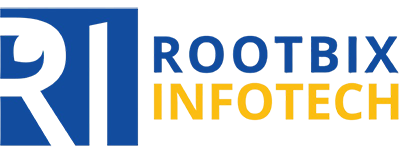Develop Talent. Increase ROI
Green-Talent Development Software facilitates the analysis of skills and competencies,
seamlessly aligning talent development with business objectives.
Trusted By
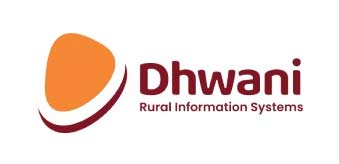
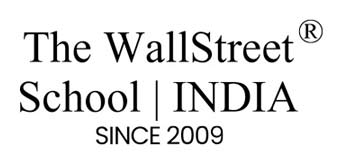
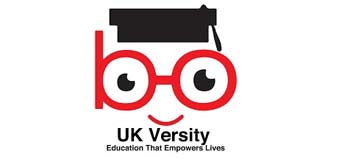
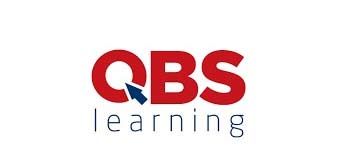

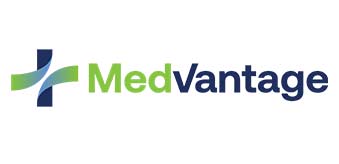
Empower Your Organization with a Talent Development Solution.
A Learning Management System (LMS) is a software application designed to facilitate the administration, documentation, tracking, reporting, automation, and delivery of educational courses, training programs, or learning and development programs
Key Features:
- Course Management: Create, manage, and deliver courses online.
- User Management: Manage user roles, enrollments, and permissions.
- Assessment Tools: Create quizzes, exams, and assignments to evaluate learners.
- Reporting and Analytics: Track learner progress and performance.
- Communication Tools: Facilitate interaction between instructors and learners through forums, chats, and messaging.
- Content Management: Upload and organize learning materials like videos, documents, and presentations.

WordPress Web Development Services We Offer
Our team of expert developers specializes in WordPress designing and developing high-quality, secure, and professional WordPress projects that upgrade the functionality of your website. So hire WordPress developer from us and build a dream website for your business.

Empower your team : Forge path to success
Unlock your team’s potential with our talent development compass. Assess strengths and weaknesses, set SMART goals, and personalize learning paths for each user. Track progress and provide ongoing feedback to enhance skills and performance.

A selfless leader doesn’t seek followers they inspire a community
Unleash Potential : Empower Your Team’s Growth with Our Talent Development Software. Cultivate Leaders, Identify Emerging Talent, and Foster Effective Mentorship-All in One Platform
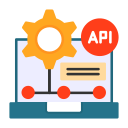
Elevate Your Team and Your Bottom Line
Our Talent Development Software Delivers Results. Track Performance, Measure ROI, and Drive Success.

The response you receive is the meaning of your communication:
Green-talent’s User-friendly Interface marked by intuitive design & simplicity ensures that users can navigate seamlessly, maximizing efficiency and enhancing overall user experience.

There is no failure , only feedback.
Our Talent Development Solution Smart Reports gives comprehensive, dynamic predictive analytics offering actionable insights into future learning trends and enabling proactive decision-making for enhanced training outcomes.
frequently asked question (FAQ's)
Green LMS is a complete LXP an AI-driven peer learning experience platform delivered using software as a service (SaaS) and on-premises. The Approach of GreenLMS is to simplify and provide complete integrated learning solution to the community. It has following wonderful features:
User-friendly Interface: One of the key reasons for preferring Green LMS is its intuitive and user-friendly interface. The system’s design makes it easy for both administrators and users to navigate, thereby enhancing the learning experience and ensuring effective administration.
Scalability: The scalability of Green LMS is another significant factor that adds to its appeal. Whether your organization is a small start-up or a large enterprise, Green LMS can scale to accommodate your needs. As your company grows, the platform can easily handle the addition of new users and courses.
Customization: The ability to customize is a vital feature of any LMS, and Green LMS excels in this aspect. It allows organizations to tailor the platform to their specific needs, from branding elements to course structures and reporting metrics.
Advanced Analytics: Green LMS provides robust reporting and analytics capabilities, allowing organizations to monitor and measure the effectiveness of their training programs. These insights can inform future training development and help identify areas for improvement.
Mobile Learning: With the rise of remote working and learning, the ability to access courses from anywhere and at any time is critical. Green LMS supports mobile learning, enabling users to engage with training materials on the go.
Cost-Effective: Green LMS offers a cost-effective solution for organizations. Its pricing structure is competitive, and the platform provides excellent value for the cost due to its robust feature set.
Environmentally Friendly: As implied by its name, Green LMS also places a strong emphasis on sustainability. By reducing the need for physical training materials, it allows organizations to decrease their environmental impact and increases ROI.
Excellent Customer Support: Green LMS is known for its excellent customer support. Their team is responsive and helpful, ensuring any issues are promptly resolved, and users can get the most out of the system.
Integration: Green LMS supports all kinds of third party LMS
SSO: It has the feature of Single Sign On which removes the hassle of remembering so many username and passwords and makes it more secured.
Green LMS combines a user-friendly interface, scalability, customization, advanced analytics and reports, inbuilt robust authoring tools, Learning Path, Competency management, mobile learning, cost-effectiveness, environmental friendliness, and excellent customer support. These features make it an attractive choice for organizations seeking an efficient and effective LMS solution.
An LMS is a potent and versatile software platform that is designed to create, manage, deliver, and track educational courses or training programs. It provides a comprehensive framework for handling all aspects of the learning process, from administration to documentation, tracking, reporting, and delivery of learning and training programs.
A Learning Management System is an essential tool in the modern corporate landscape. It not only revolutionizes how training and learning are delivered but also ensures that these processes are efficient, engaging, and in line with the organization’s objectives. By embracing an LMS, organizations can empower their employees, improve productivity, and ultimately drive business success.
As we navigate the digital age, organizations be it corporate, schools, universities or an enterprise all are continually on the lookout for innovative ways to train and educate their employees, students…. One solution that has emerged as a game-changer in the realm of professional growth and academic training is the Learning Management System (LMS). The system is usually cloud-based, thereby enabling remote access, which is a crucial feature in our increasingly remote and flexible Academic and work culture.Learning Management Systems come packed with features that cater to the diverse needs of learners, instructors, and administrators. Some standard components of an LMS include:
Course Management: This involves creating and managing a curriculum, setting up class rosters,and controlling registration.
- Course Management: This involves creating and managing a curriculum, setting up class rosters,and controlling registration.
- Content Delivery: An LMS can deliver course content over a web-based interface, offering a fully remote educational experience for both instructors and students.
- Interaction Tools: An LMS fosters interaction between learners through features such as instant messaging, email, and discussion forums.
- Assessment and Testing: An LMS can establish methods for assessment and testing, such as multiple-choice quizzes or interactive assignments.
- Reporting and Tracking: LMS platforms can generate detailed reports that provide insights into learners’s progress, performance, and course completion.
- Customized Reports: These Reports help an organization or an individual to see their progress from various aspects and not as fixed by an instructor or an organization thereby giving the holistic approach in the learning methodology.
- Authoring tools: Using Authoring tools in LMS helps to create Gamified and interactive courses there increasing the learner’s engagement.
- Social Platform: A social wall in an LMS is a feature that integrates social media-like elements into the learning environment. It provides a space where learners, instructors, and administrators can engage in social interactions, share resources, collaborate, and communicate within the LMS platform.
- Gamification: Gamification refers to the practice of incorporating game-like elements and mechanics into an LMS platform to enhance the learning experience and increase learner engagement. By integrating elements such as points, badges, leader-boards, levels, and rewards, Gamification aims to motivate learners, promote active participation, and make the learning
process more enjoyable and immersive. - Tracking progress:Tracking progress in an LMS (Learning Management System) is a crucial aspect of monitoring and evaluating learner performance and engagement using assessment and quizzes, badges, course completion report etc…
- Easy Grading: Due to the Artificial Intelligence its become automatic grading system in LMS once some one completes the assessments, assignments and quizzes etc for evaluating the learning objective of the child.
- Easy Integrations: Due to API and robust and flexible structure of how LMS is built, integration to the third party software has become very easy in many of the LMS.
- CMS: Content management system is an integral part of any Academic or corporate institution. Many of good LMS are offering inbuilt CMS for centralized content management.
Dissecting the Core Components of a Learning Management System (LMS)
The Learning Management System (LMS) has transformed how organizations conduct training and learning initiatives. As a robust and versatile tool, an LMS plays a pivotal role in delivering, managing, and tracking educational courses and training programs. But what elements constitute an LMS? What are the features that make it such a powerful platform? Let’s dissect the core components that define a Learning Management System.
Course Management: The Heart of an LMS
At the core of any LMS is the functionality to create, manage, and deliver courses. This includes the ability to set up class rosters, control registrations, build waiting lists, and establish course calendars. The LMS allows administrators to create and upload curriculum content, making it readily available to learners.
Content Delivery: The Lifeline of Learning
A key feature of an LMS is its ability to deliver course content over a web-based interface. This feature provides a fully remote learning experience for both instructors and learners. With content delivery, an LMS can disseminate a variety of learning materials, including text, audio, video, and interactive content.
Interaction Tools: Fostering Collaboration and Engagement
An LMS isn’t just about delivering course content; it’s also about fostering interaction and collaboration. Features such as instant messaging, email, discussion forums, and social learning tools encourage engagement and interaction among learners. These tools foster a sense of community, boost engagement, and facilitate peer learning.
Assessment and Testing: Measuring Learning Outcomes
An LMS provides robust tools for assessment and testing. This includes the ability to create a variety of quizzes, tests, and assignments, enabling instructors to measure learners’ understanding and retention of the course material. Additionally, these tools provide learners with valuable feedback, helping them identify areas of strength and areas for improvement.
Reporting and Tracking: Harnessing the Power of Data
Arguably one of the most powerful components of an LMS is its ability to track learners’ progress and generate detailed reports. This includes tracking course completion, test scores, time spent on learning activities, and more. These data provide invaluable insights into learning outcomes, helping instructors and administrators identify gaps in learning, tailor training programs, and ensure compliance with training regulations.
HR Integration: Linking Learning with Employee Performance
In a corporate context, an LMS often comes with HR integration features. This allows the system to link learning activities with employees’ performance goals, employment eligibility, and course completions. This feature enables organizations to align learning initiatives with overall business objectives, driving business growth and success.
In a Learning Management System is much more than just a platform for delivering courses. A comprehensive, multifaceted tool facilitates efficient learning, fosters engagement, measures learning outcomes, and harnesses the power of data. Whether you’re an educator, corporate trainer, or HR professional, understanding these components can help you leverage an LMS to its fullest potential.
Unpacking the Advantages of a Learning Management System (LMS)
The digital revolution has brought about a significant shift in the way learning and training are imparted, and at the forefront of this transformation is the Learning Management System (LMS). As a powerful tool for managing, delivering, and tracking learning content and performance, an LMS holds numerous advantages for organizations of all sizes. Let’s unpack these benefits to understand why an LMS is a cornerstone of modern learning initiatives.
Streamlined Learning Process
One of the most significant advantages of an LMS is its ability to streamline the learning process. With an LMS, all learning materials are stored in a centralized location, eliminating the risk of losing crucial information. This centralization not only makes it easier for learners to access and navigate through the course content but also simplifies content updates and maintenance for administrators.
Anytime, Anywhere Learning
In today’s fast-paced world, the flexibility to learn at one’s own pace and convenience is a massive advantage. An LMS facilitates this by offering anytime, anywhere access to learning content. Whether your team is in the office, working remotely, or spread across different time zones, everyone can access the same content at a time and place that suits them best.
Improved Learning Engagement and Retention
An LMS can significantly enhance learner engagement and knowledge retention. With features like multimedia content, interactive quizzes, discussion forums, and gamification, learners are more likely to stay engaged and retain the knowledge they’ve acquired. Plus, the ability to revisit the content as needed allows learners to reinforce their learning over time.
Customized Learning Experience
Every learner is unique, with their own set of strengths, weaknesses, and pace of learning. An LMS caters to this diversity by enabling personalized learning paths. Learners can choose what they want to learn, follow their own learning pace, and receive personalized feedback, leading to a more effective and satisfying learning experience.
Efficient Tracking and Reporting
An LMS provides robust tracking and reporting capabilities. Administrators can monitor learners’ progress, assess their performance, and identify gaps in their learning. These insights can be used to improve course content, tailor learning paths, and make informed decisions about future learning initiatives.
Cost-Effective Learning Solution
Implementing an LMS can result in significant cost savings. By transitioning to digital learning, organizations can cut down on the costs associated with traditional classroom training, such as travel, venue, and instructor costs. Plus, the scalability of an LMS means that it can accommodate as many learners as needed, without incurring additional costs.
Compliance and Certification Management
For industries with mandatory compliance training and certifications, an LMS is a godsend. It ensures that all employees complete the required training, and it keeps track of their progress and certification status. This not only ensures compliance with industry regulations but also simplifies the often tedious process of compliance management.
In, an LMS brings together the power of digital technology and the principles of effective learning to provide a versatile, efficient, and cost-effective learning solution. Whether you’re looking to train your employees, educate your customers, or provide educational courses, an LMS can be an invaluable asset.
Unpacking the Advantages of a Learning Management System (LMS)
The digital revolution has brought about a significant shift in the way learning and training are imparted, and at the forefront of this transformation is the Learning Management System (LMS). As a powerful tool for managing, delivering, and tracking learning content and performance, an LMS holds numerous advantages for organizations of all sizes. Let’s unpack these benefits to understand why an LMS is a cornerstone of modern learning initiatives.
Streamlined Learning Process
One of the most significant advantages of an LMS is its ability to streamline the learning process. With an LMS, all learning materials are stored in a centralized location, eliminating the risk of losing crucial information. This centralization not only makes it easier for learners to access and navigate through the course content but also simplifies content updates and maintenance for administrators.
Anytime, Anywhere Learning
In today’s fast-paced world, the flexibility to learn at one’s own pace and convenience is a massive advantage. An LMS facilitates this by offering anytime, anywhere access to learning content. Whether your team is in the office, working remotely, or spread across different time zones, everyone can access the same content at a time and place that suits them best.
Improved Learning Engagement and Retention
An LMS can significantly enhance learner engagement and knowledge retention. With features like multimedia content, interactive quizzes, discussion forums, and gamification, learners are more likely to stay engaged and retain the knowledge they’ve acquired. Plus, the ability to revisit the content as needed allows learners to reinforce their learning over time.
Customized Learning Experience
Every learner is unique, with their own set of strengths, weaknesses, and pace of learning. An LMS caters to this diversity by enabling personalized learning paths. Learners can choose what they want to learn, follow their own learning pace, and receive personalized feedback, leading to a more effective and satisfying learning experience.
Efficient Tracking and Reporting
An LMS provides robust tracking and reporting capabilities. Administrators can monitor learners’ progress, assess their performance, and identify gaps in their learning. These insights can be used to improve course content, tailor learning paths, and make informed decisions about future learning initiatives.
Cost-Effective Learning Solution
Implementing an LMS can result in significant cost savings. By transitioning to digital learning, organizations can cut down on the costs associated with traditional classroom training, such as travel, venue, and instructor costs. Plus, the scalability of an LMS means that it can accommodate as many learners as needed, without incurring additional costs.
Compliance and Certification Management
For industries with mandatory compliance training and certifications, an LMS is a godsend. It ensures that all employees complete the required training, and it keeps track of their progress and certification status. This not only ensures compliance with industry regulations but also simplifies the often tedious process of compliance management.
In, an LMS brings together the power of digital technology and the principles of effective learning to provide a versatile, efficient, and cost-effective learning solution. Whether you’re looking to train your employees, educate your customers, or provide educational courses, an LMS can be an invaluable asset.
The Financial Considerations of Implementing a Learning Management System (LMS)
As businesses increasingly recognize the importance of continuous learning and professional development, Learning Management Systems (LMS) have become a staple in many organizations. However, the price of an LMS can be a significant barrier for many, particularly smaller businesses or startups. Understanding the costs associated with implementing and maintaining an LMS can help organizations make informed decisions about which system is best for their needs.
Types of LMS: Free vs. Paid
A crucial first consideration is choosing between free and paid LMS options. Open-source platforms like Moodle offer a no-cost solution, but they require a high degree of technical expertise to manage and customize effectively. Paid LMS platforms, on the other hand, offer comprehensive features and support for a fee. They often provide a more user-friendly, out-of-the-box solution with less required maintenance.
Pricing Models
Pricing models for LMS platforms can vary significantly and often depend on the size and needs of the organization. Common pricing models include:
- Per User: In this model, organizations pay a fee for each user or learner registered in the system. This model can be cost-effective for smaller businesses but may be expensive for larger organizations.
- Subscription: Subscription-based LMSs charge a set fee, usually monthly or annually. This model offers predictable costs and allows businesses to scale their LMS use up or down as needed.
- Licensing: Some LMS providers charge a one-time licensing fee. While this may seem cost-effective initially, it can involve additional costs for upgrades, maintenance, and support.
Hidden Costs
While considering an LMS’s upfront cost, it’s essential to be aware of potential hidden costs. These could include:
- Implementation and Setup: Depending on the LMS’s complexity, there could be significant costs associated with setting up and integrating the system into your existing infrastructure.
- Customization: If you require specialized features or customizations, these could incur additional charges.
- Training: Your staff will need to understand how to use the LMS effectively, which may require investment in training.
- Upgrades and Maintenance: If you choose a licensed LMS, you may need to budget for ongoing maintenance and software upgrades.
General Cost Indications
The cost of LMS platforms can vary widely, making it difficult to provide a specific price range. However, as a rough guide, a cloud-based LMS can range from $1 to $10 per user per month. A licensed, self-hosted LMS could cost a few thousand dollars upfront, excluding potential costs for maintenance and upgrades.
Implementation of an LMS involves several financial considerations, including the type of LMS, the pricing model, and potential hidden costs. By understanding these factors, organizations can choose an LMS that suits their budget and meets their learning and development needs.
Trusted By
We follow the best ux design practices to deliver exemplary results.






Key Considerations When Choosing LMS Development Services:
- Strategy Alignment: Ensure the agency understands your business goals and can tailor strategies to achieve them.
- Experience and Expertise: Look for agencies with a proven track record in your industry and with similar objectives.
- Client Testimonials and Case Studies: Review client feedback and success stories to assess reliability and results.
- Transparency and Communication: Seek clear communication channels and regular updates on campaign performance.
- Technology and Tools: Evaluate the agency’s use of digital marketing tools and platforms to optimize campaigns.
- Budget and ROI: Consider pricing structures and how services align with your budget and expected return on investment.
- Ethics and Compliance: Confirm adherence to ethical standards and compliance with digital marketing regulations.
